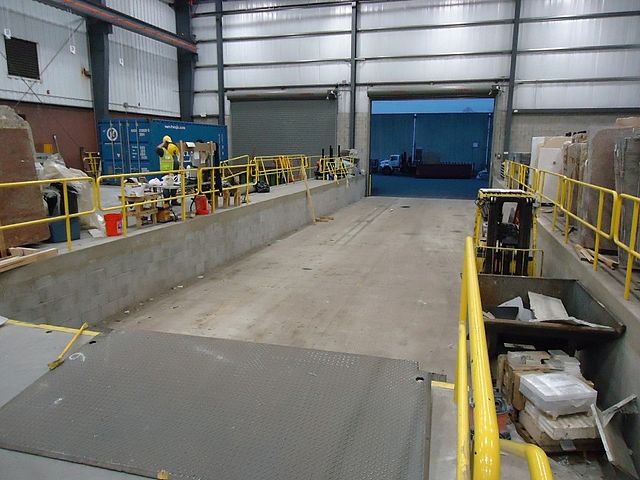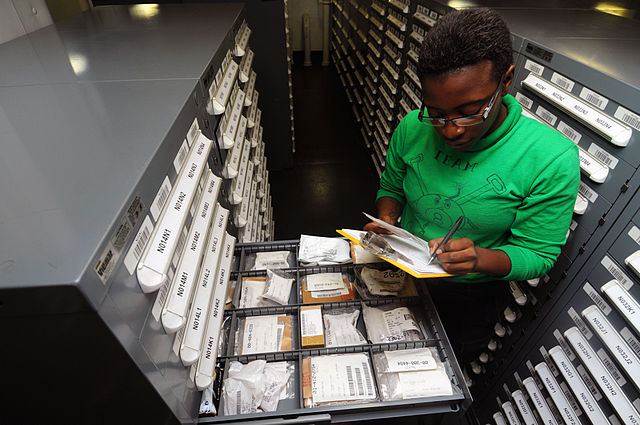A discount store or discounter offers a retail format in which products are sold at prices that are in principle lower than an actual or supposed "full retail price". Discounters rely on bulk purchasing and efficient distribution to keep down costs.
Tokmanni in Tampere, Finland
ALDI in Tomaszów Mazowiecki, Poland
Logistics is the part of supply chain management that deals with the efficient forward and reverse flow of goods, services, and related information from the point of origin to the point of consumption according to the needs of customers. Logistics management is a component that holds the supply chain together. The resources managed in logistics may include tangible goods such as materials, equipment, and supplies, as well as food and other consumable items.
A warehouse in South Jersey, a U.S. East Coast epicenter for logistics and warehouse construction outside Philadelphia, where trucks deliver slabs of granite
A warehouse implementing a pallet rack storage system
A logistics specialist inventories supplies in a storeroom aboard the aircraft carrier USS George H. W. Bush during Operation Enduring Freedom in the Persian Gulf in October 2011
Loading of a thermal oxidizer in preparation for its transport to a manufacturing plant






